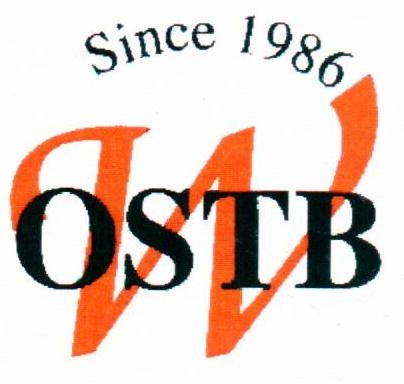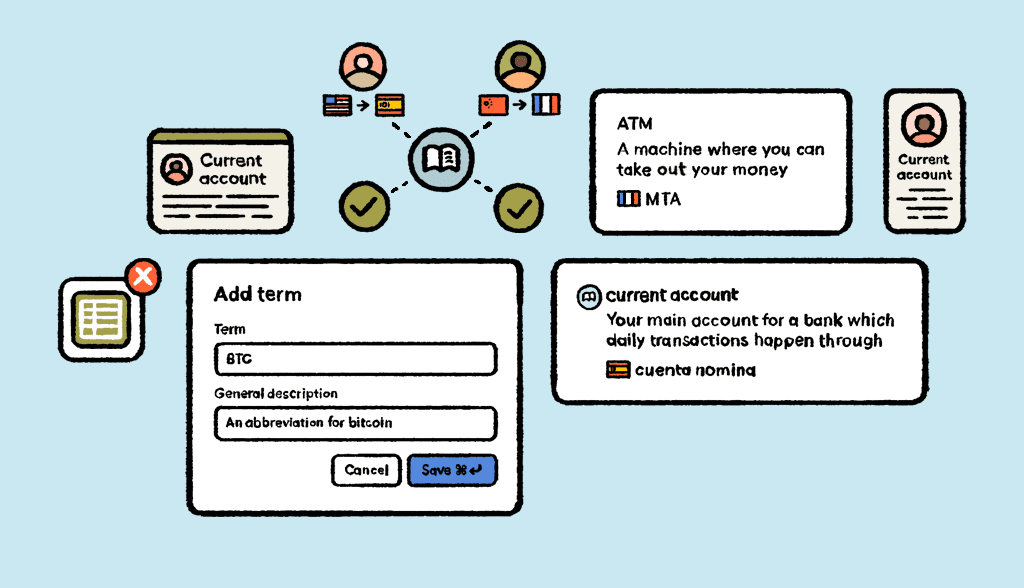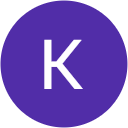Localization common terminology participates in expansion and customer satisfaction. Find out the meanings of the most important terminologies.
Localization is adapting a product’s functional properties and characteristics to another language, cultural, political, and legal differences of a foreign market or country. The main goal of localization is to create a connection that promotes the value of your product to the clients. Localization is not only an option for companies that want to go global, but it is now becoming a must, strategic plan that helps a brand to be known around the world. When you localize your website, products, or marketing campaigns, you create a bridge to your target consumers and make your brand to be distinguished and outstanding in local markets.
Hence localization participates in market expansion, sales growth, and customer satisfaction. Each industry has its jargon, so the language service industry has a language of its own. The localization is filled with terms that you might not be familiar with. So this article includes the most common terms that you find when managing the translation and localization process.
Localization Common Terminology Made Easy
Alignment
It matches segments or sentences in translated documents as translation units or sentence pairs in a TM tool; the alignment tool matches the source and target language files side-by-side, to specify the similar pairs together. By creating translation memories through translation alignment, so you don’t need to translate the same sentence once more in the future.
Automatic Content Enrichment (ACE)
It creates a bridge between single-language websites and localization, Automatic Content Enrichment technology connects English words and phrases on web pages with pop-ups that have information in a user’s native language.
Translation unit (Trados)
It’s a segment or sentence pair in source and target languages together.
Bi-directional language (writing system)
The script is read from right to left but has some exceptions in which other characters, for example, numbers, read from left to right for European terms. Examples of bidirectional languages are Hebrew and Arabic.
Character set
It’s a group of symbols or characters that correspond to textual information in a language or language group. The characters are available in an application program. The common is the ASCII (or ANSI) set of 128 characters, in which CAPITAL LETTER A has the code 41 in hexadecimal, 065 decimal, and 01000001 binary. Various localized character sets are ISO 8859-1 or Latin-1, the most common encoding of characters for Western European languages. ISO 8859-1 through 8859-15 are 256 character sets. The first 128 characters are the same as ASCII, and the upper 128 encodes Cyrillic, Hebrew, Arabic, etc. characters.
Computer-Aided Translation (CAT)
Using a TM tool by a human translator to facilitate translation. It enables the translator to translate the same sentence just once and he doesn’t have to repeat the same sentence translation. It also guarantees that translations will be the same when coherence is a requirement for the material.
DTP
Using software for creating high-quality publications that merge text and graphics in a sophisticated layout following design standards. Localization also includes the act of creating and keeping the look and feel of the original document once translated into other languages.
Font
The symbols or shapes that show a character on the computer screen or a printer. The mapping between character codes and symbols may be different on different operating systems.
Full match (100% match)
A segment or sentence in a source document for which the TM tool has an identical match in the target language, including font style and various features like context.
Fuzzy match (partial match)
An indication that words or sentences are partially – but not exactly – matched to previous translations, including font style and different features like context. The fuzzy match is when the match (during TM analysis) is not exact.
Gist translation
Using human or machine translation to create a rough translation of the source text led the reader to understand the meaning of the context.
Globalization (g11n)
The term describes the process of designing, developing, and adapting a product in multiple countries. Globalization describes the process by which regional economies, societies, and cultures become overlapping through a global network through communication, transportation, and trade. G11N includes all the strategic and marketing preparation that goes into the global distribution of a product.
Global Content Management System (GCMS)
A translation tool made to automate the translation of websites and other content that changes permanently. It supports content management, It allows individuals who don’t know HTML to manage the processes of creating, editing, archiving, and publishing website content. Common CMS systems include WordPress, Joomla, and Drupal.
Glossary
A glossary known as an idioticon, vocabulary, or clavis, it’s for localization is a list of terms in the source language and their definitions, paired with a list of corresponding terms in the target language. Usually, a glossary exists at the end of a book and includes terms within that book that are newly introduced, uncommon or specialized. Generally, a glossary contains explanations of concepts related to a certain field of study or action.
GUI
The symbol GUI stands for Graphical User Interface and is synonymous with UI.
Hotkey
A keyboard shortcut is used to enter functions in menus and sub-menus. A hotkey is represented usually by a mnemonic which appears as an underline on the menu line.
Input Method
A language-specific computer keyboard or a software tool allows any standard keyboard to input the characters or ideographs of a language. In case the symbols are more than the number of keys like in Asian languages, the software presents a selection of possibilities for clicking with a mouse.
Input Method Editor
An Input Method Editor is simple like a localized keyboard that shows the suitable character symbols for the local language. It may be a software program that works with a standard keyboard and mouse for choosing character symbols from an onscreen display. It produces character symbols after a sequence of keys has struck. More complicated input methods include graphic pads that recognize a character drawn with a stylus and speech recognition systems.
Internationalization (i18n)
Internationalization is a process of product designing so it can be adapted to different languages and locales without engineering changes to support global markets. This process eliminates all cultural assumptions and any country or language-specific content is kept so that it can be easily adapted. It will be fixed during localization if this content is not separated during this step.
Language kit
A feature added to an operating system that makes its keyboard and application programs work in the character sets suitable to the language, and to render its fonts.
Locale
A combination of a language and a specific geographic area (often country) where the culture is distinguishing enough to use different terminology and web page designs.
Localization (L10n)
It’s the act of adapting or modifying software and documentation for a special culture or region. Language localization is the second step of a larger process which is product translation and cultural adaptation, into the natively spoken language. Language localization is not just a translation activity, because it involves a complete study of the target culture to adapt the product to local needs. Localization refers to the adaptation of a product for a specific market. The localization process is most generally related to the cultural adaptation and translation of software, video games, and websites, and less frequently to any written translation.
Machine Translation (MT)
A translation tool translates text automatically which is not previously seen based either on linguistic parsing or similar text kept in a database.
Markup language
It’s an artificial language that uses annotations to show how the text will be formatted. It surrounds text at the beginning and ending with tags set off in angle brackets. Translators must leave the words in the tags without changes. TM tools that are markup-aware, such as Trados and TagEditor do not change tags, except for specific quoted material inside a tag’s features (e.g. HTML, SGML, and XML).
Multilingual
It refers to software that supports more than one language at the same time, so it allows the end user to choose multiple languages and formats. This software let data that has many languages be entered, processed, and transmitted in many various locales.
Multiple Language Vendor (MLV)
It’s an almost large localization service provider that offers services in multiple language pairs and other services.
Single Language Vendor (SLV)
A localization service provider that offers translation and localization services into one language.
Pre-translation
It has the planning of updated files for translation as the existing files already contain related segments of the previously translated data. Only 100% of matches are replaced, as they’re a set of files containing both source and target language terminology, thus it avoids rework and extra costs.
Segment
A part of the document is usually separated from the rest of the text limited by punctuation – periods, tabs, paragraph marks, or custom tags. The phrase or sentence is the basic unit of information kept in translation memory with its corresponding bilingual matching phrase.
Shortcut key
A keyboard combination is used to enter functions in menus and sub-menus. The shortcut key combination is an abbreviation of the menu item order. For example (Ctrl+V) is a typical key combination for the Paste order. This key combination is not changed in localization when the same combination (Ctrl+V) is used in the localized version of a product.
Wostb has a translation office in Abu Dhabi offering a wide range of translation services. We are always ready to serve you 24/7.
Sims
It’s an abbreviation for “simultaneous shipment,” the release of many product versions at the same time.
Source language
It’s the original language in which the product is localized.
Target language
Language into which the text is translated.
Termbase
It is a database containing terminology and relevant information. Most termbases are multilingual and contain terminology data from different languages. There are fields in the database that are recorded for each term to define the concept, provide glosses suitable to a subject field, and source information.
Terminology
A database of collected words is used to pave the way for high-quality translation.
Terminology Manager
It’s a software tool such as Trados MultiTerm that allows the combination of the termbase in the translation.
Term list
A terminology list is often bilingual. It’s in a format like comma-delimited or tab-delimited files appropriate for use with a spreadsheet.
Text expansion
It is a process that usually occurs in translation which makes the total number of characters in the target text become more than that of the source text.
Translation Memory (TM)
A translation tool that keeps text segments and their translations in a database and automatically gets back translations for text that is in the database from previous texts. The tool finds similar segments and their translations to help the translator.
Check Also:
- French translation Abu Dhabi
- Proofreading Services Abu Dhabi
- Pros and Cons of Machine Translation!
- Marriage certificate translation Abu Dhabi cost
- Difference between sworn and certified translation
- Translation Office Abu Dhabi
Conclusion
Now you understand localization common terminology better. You can also rely on our experts to help you understand localization better through our professional team of native translators around the world. Each provider of Legal Translation Services in Abu Dhabi ensures that each translator of its team is fully aware of the above terms for ease of communication between team members and good management of translation projects. We hope we help the community of junior translators with the above terms and tips that qualify them to be leaders of the translation market.







